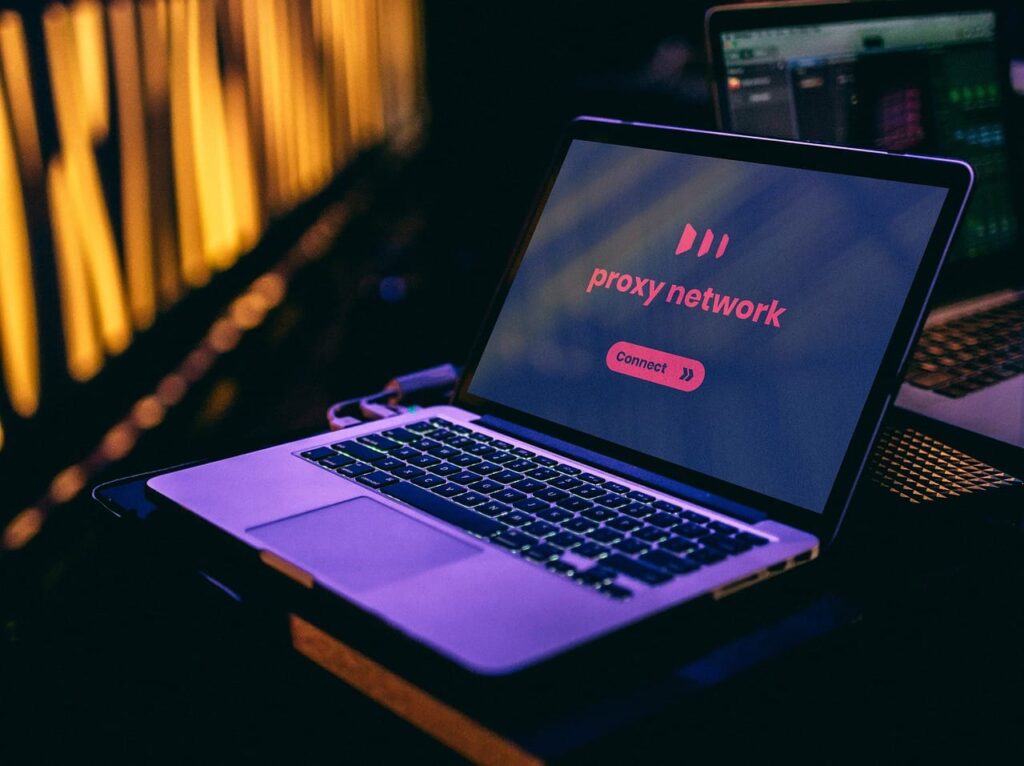Proxies ensure mediation between internet users and the internet for reasons of anonymity, access to censored content, and increased security.
Amidst the broad range of proxies, though, are two fundamental proxies—rotating proxies and static proxies—that cater to various requirements and uses.
Understanding what makes them different, how they operate, and the reasons behind them is critical to companies that rely on proxy networks for intelligence operations, security audits, and anonymity protection.
The Key Distinctions Between Rotating and Static Proxies
Behind the distinction between rotating proxies and static proxies lies the matter of how IP addresses are allocated and presented to outside servers.
Rotating proxies allocate random substitute IP addresses for each request or session, continuously altering the online user’s electronic signature.
Static proxies, on the other hand, use the same IP address for the duration of their service, emulating a fixed, one-user internet presence.
Rotating proxies are particularly beneficial for web scraping, data collection, and large-scale automation that requires high-volume requests without triggering anti-bot protection. Rotating proxies distribute requests across a pool of IPs, which reduces detection and blocking by target sites.
On the other hand, static proxies are better suited to operations requiring long-term identity, such as the operation of social media accounts, extended market research, or the maintenance of access to services that adhere to strict authentication protocols.
How Rotating Proxies Work in Reality
Rotating proxies function by updating the IP address applied with outgoing requests in a dynamic manner. Rotation speed is determined by the proxy service configuration, ranging from rotating per request, per session, or fixed time intervals.
Such IP addresses are often sourced from enormous pools of residential, data center, or mobile proxies such that the user would appear to be accessing from diverse locations and devices.
When a user sends a request through a rotating proxy network, the system selects an IP address from the pool and sends the request through it.
If the configuration is such that a new IP is utilized for every request, the next request will be sent from a different address, so it cannot be identified as automated activity.
Others provide session-based rotation, where an IP is retained for a definite time span before it is changed, offering some persistence without compromising on detection risk.
Because they can hide repeat request patterns, rotating proxies find applications in competitive intelligence collection, price scraping, ad verification, and mass data scraping.
Their dynamic nature allows them to bypass IP-based traffic limits, captchas, and other access restrictions designed to curb automated traffic.
The Stability and Reliability of Static Proxies
Unlike rotating proxies, static proxies provide one and only one fixed IP address that remains unchanged throughout the usage duration. They are normally leased from Data Centers or Internet Service Providers (ISPs) and hence provide a valid and stable presence online.
As they share the same IP identity in the long run, they are more ideal to use in applications where constant access to specific services is required for a long period of time without being cut off.
Businesses and users of static proxies do so for the purpose of establishing a well-known and respected online presence.
Social media administrators, e-commerce specialists, and business researchers rely on static proxies to be able to keep on accessing accounts and websites that would flag frequent changes of IP addresses as suspicious activity.
Another significant advantage of static proxies is that they have a lower likelihood of being blocked compared to data center proxies. When procured from residential or ISP networks, they appear as regular users and not automated, thus less likely to instigate security protocols designed to detect use of proxies.
This dependability is particularly important where reliability is paramount, for example, in managing business accounts, monitoring digital advertising campaigns, and regulatory compliance audits.
Security and Privacy Implications of Proxy Employment
Rotating and static proxies have unique security and privacy considerations that must be met in regard to their introduction into operational procedure.
While rotating proxies enhance anonymity as well as reduce traceability, they similarly introduce potential in regard to the integrity of the data, dependability, as well as fair data collection measures. Use of large-scale proxy networks, particularly residential IPs, may be problematic in terms of the validity of IP acquisition and the extent to which users are made aware that their devices are part of such networks.
Static proxies, while providing a more consistent and controlled environment, come with risks of their own. One reliable IP can get linked with an individual user or organization and then become susceptible to tracking or blocking by the service providers.
Should a static proxy be used nefariously or end up getting blacklisted, gaining access is problematic because the offending IP is flagged and doesn’t ever become unflagged.
Security-conscious organizations must carefully weigh the compromises between anonymity, persistence, and risk when selecting a proxy solution.
The decision must be made based on specific operational needs so that the chosen proxy type is appropriate for the intended use case while being compliant with legal and ethical demands.
Choosing Between Rotating and Static Proxies for Different Use Cases
The choice between rotating and static proxies is largely a matter of the application desired and the technical constraints of the environment they are being implemented in.
In large-scale data gathering operations, where avoiding detection and maximizing request throughput is paramount, rotating proxies are the preferable option. Their ability to distribute traffic across a large pool of IPs minimizes the risk of blocks and captchas, ensuring constant access to target data sources.
Conversely, in operations that involve persistent identity and stable access, static proxies are the most suitable.
From managing multiple accounts on social media platforms, financial transactions, to sustained monitoring of digital assets, the stability of a static IP provides a seamless user experience without the disruptions caused by frequent IP changes.
Hybrid approaches are also available, in which companies employ rotating and static proxies based on the job in question. This strategic utilization of proxy networks allows businesses to optimize their web activities while minimizing detection, blocking, and security risks.
Conclusion: The Role of Proxies in Modern Internet Operations
Rotating and static proxies are both fundamental to the functioning of today’s internet, permitting users access to a more complex and censurable online realm.
Each has its specific benefits that fill distinct needs, from anonymity to dependability to overcoming access constraints. Organizations depending on proxy networks must balance their objective and working restrictions to choose the most fitting proxy strategy.
Read more: Jacksonville Computer Network Issue: When to Call the Pros



